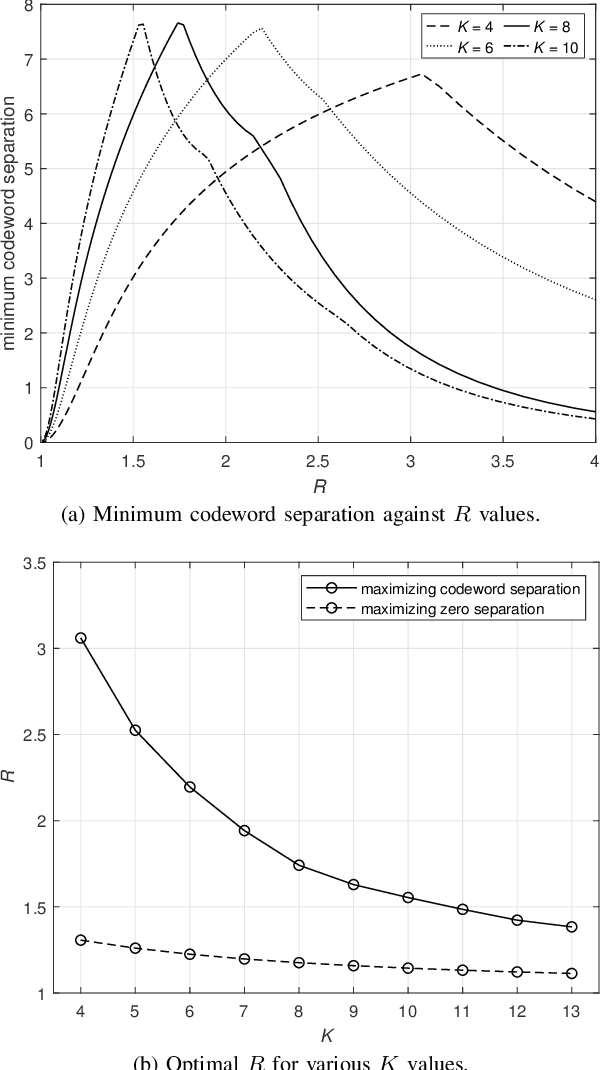Parker Huggins
On the Optimal Radius and Subcarrier Mapping for Binary Modulation on Conjugate-Reciprocal Zeros
Aug 19, 2024



Abstract:In this work, we investigate the radius maximizing reliability for binary modulation on conjugate-reciprocal zeros (BMOCZ) implemented with both maximum likelihood (ML) and direct zero-testing (DiZeT) decoders. We first show that the optimal radius for BMOCZ is a function of the employed decoder and that the radius maximizing the minimum distance between polynomial zeros does not maximize the minimum distance of the final code. While maximizing zero separation offers an almost optimal solution with the DiZeT decoder, simulations show that the ML decoder outperforms the DiZeT decoder in both additive white Gaussian noise (AWGN) and fading channels when the radius is chosen to maximize codeword separation. Finally, we analyze different sequence-to-subcarrier mappings for BMOCZ-based orthogonal frequency division multiplexing (OFDM). We highlight a flexible time-frequency OFDM waveform that avoids distortion introduced by a frequency-selective channel at the expense of a higher peak-to-average power ratio (PAPR).
 Add to Chrome
Add to Chrome Add to Firefox
Add to Firefox Add to Edge
Add to Edge